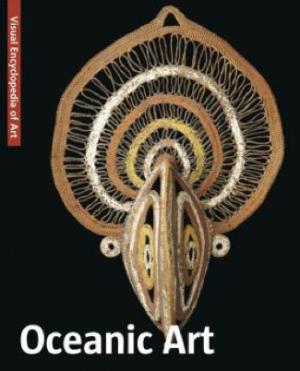
Oceanic Art

The Visual Encyclopedia of Art
ISBN 9781566499736 (paperback)
Published in August 2012
The immense expanse that opens up between Asia and the coast of America represents an ancient and fascinating world. On the routes traced by the winds and currents, populations and cultures appeared, integrated and split up over the course of the centuries, adapting themselves to a powerful nature that generated unique religious practices whose artistic manifestations are well known.
The history of Australia, Melanesia, Micronesia, Easter Island, and Polynesia originated with ancient migrations from the continent of Asia. The most distant in time, which took place about 40,000 years ago, brought populations to Papua New Guinea and Australia. The following migration, about 10,000 years ago, brought populations to the more distant archipelagos and to New Zealand. Around 1,500 BCE the Lapita culture spread, which expanded from its ancestral centers in New Caledonia and provided fertile ground for local artistic traditions that reached the extreme limits of Oceania.
Inevitably, the distance from their origins, the different environmental conditions the populations faced, and later fragmentations led to a differentiation of cultures, which were alos open to external influences. From Asia, but soon also from the American coast, transcontinental routes increasingly affected wider areas in the Pacific; the process of change it caused was slow, but constant. European exploration along with colonization and the spread of missionaries enormously influenced the local cultures. While this initially hastened a crisis, it later played a part in recovery and conservation.
The history of Australia, Melanesia, Micronesia, Easter Island, and Polynesia originated with ancient migrations from the continent of Asia. The most distant in time, which took place about 40,000 years ago, brought populations to Papua New Guinea and Australia. The following migration, about 10,000 years ago, brought populations to the more distant archipelagos and to New Zealand. Around 1,500 BCE the Lapita culture spread, which expanded from its ancestral centers in New Caledonia and provided fertile ground for local artistic traditions that reached the extreme limits of Oceania.
Inevitably, the distance from their origins, the different environmental conditions the populations faced, and later fragmentations led to a differentiation of cultures, which were alos open to external influences. From Asia, but soon also from the American coast, transcontinental routes increasingly affected wider areas in the Pacific; the process of change it caused was slow, but constant. European exploration along with colonization and the spread of missionaries enormously influenced the local cultures. While this initially hastened a crisis, it later played a part in recovery and conservation.